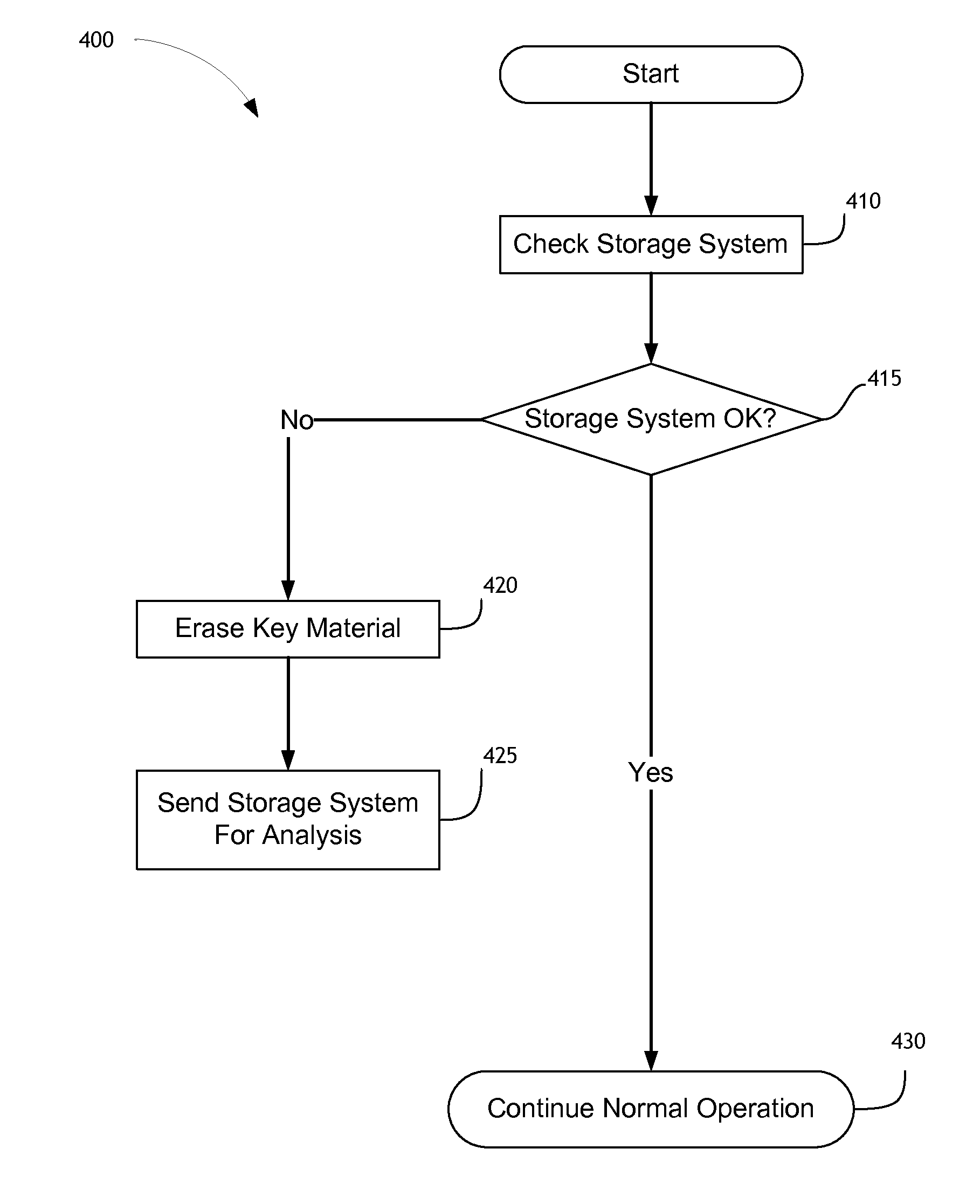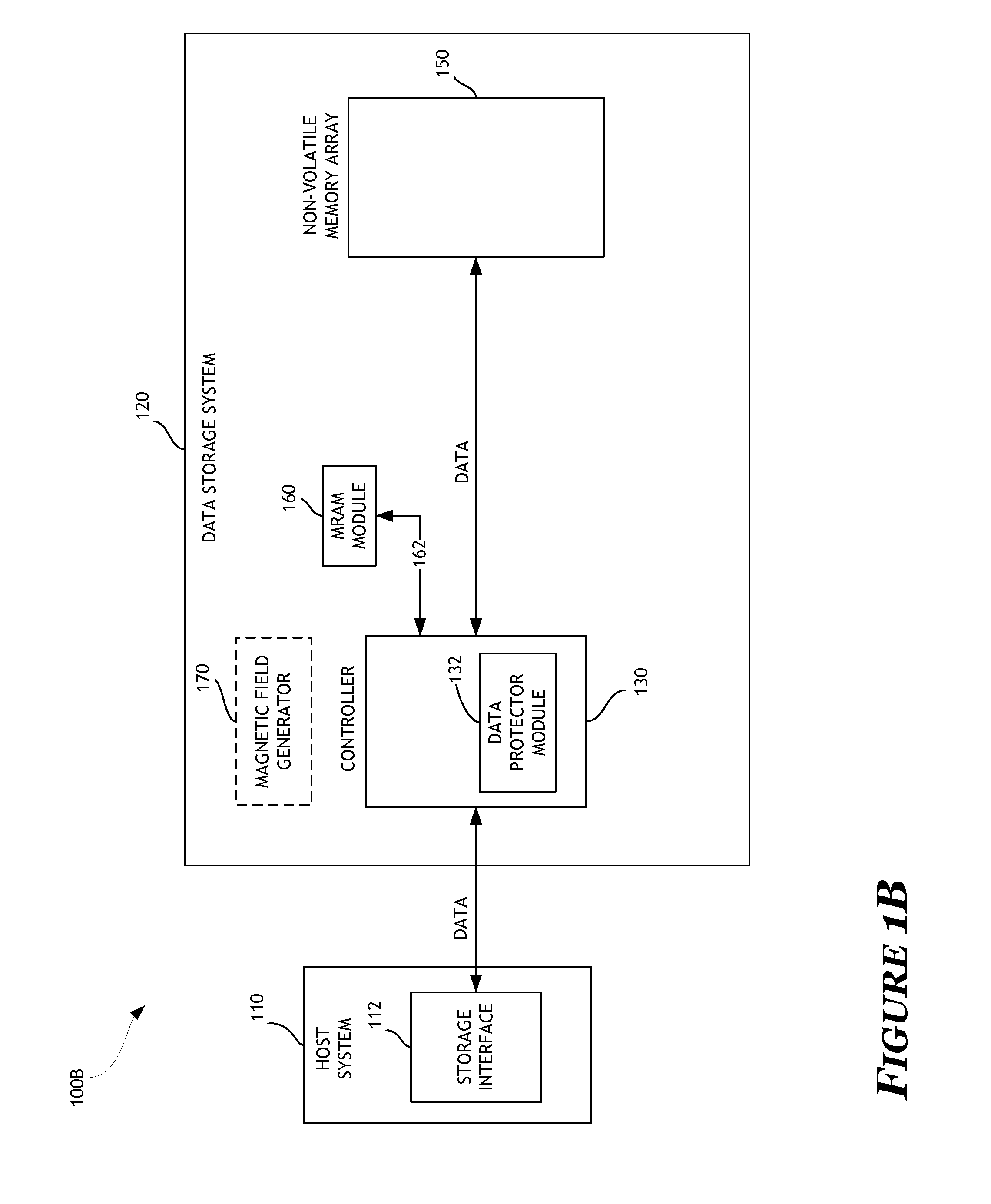MRAM-based security for data storage systems
- Summary
- Abstract
- Description
- Claims
- Application Information
AI Technical Summary
Benefits of technology
Problems solved by technology
Method used
Image
Examples
Embodiment Construction
[0013]While certain embodiments are described, these embodiments are presented by way of example only, and are not intended to limit the scope of protection. Indeed, the novel methods and systems described herein may be embodied in a variety of other forms. Furthermore, various omissions, substitutions, and changes in the form of the methods and systems described herein may be made without departing from the scope of protection.
Overview
[0014]It is desirable to provide the ability to efficiently prevent access to sensitive data stored in a data storage system. Advantageously, a security mechanism is configured to prevent access without having to erase or modify (e.g., encrypt) data that is already stored in the data storage system. This is especially beneficial in a data center setting in which hundreds or more data storage systems are housed. The security mechanism is further configured to prevent access to data (or cryptographically erase data) in situations when the data storage s...
PUM
 Login to View More
Login to View More Abstract
Description
Claims
Application Information
 Login to View More
Login to View More - R&D
- Intellectual Property
- Life Sciences
- Materials
- Tech Scout
- Unparalleled Data Quality
- Higher Quality Content
- 60% Fewer Hallucinations
Browse by: Latest US Patents, China's latest patents, Technical Efficacy Thesaurus, Application Domain, Technology Topic, Popular Technical Reports.
© 2025 PatSnap. All rights reserved.Legal|Privacy policy|Modern Slavery Act Transparency Statement|Sitemap|About US| Contact US: help@patsnap.com



